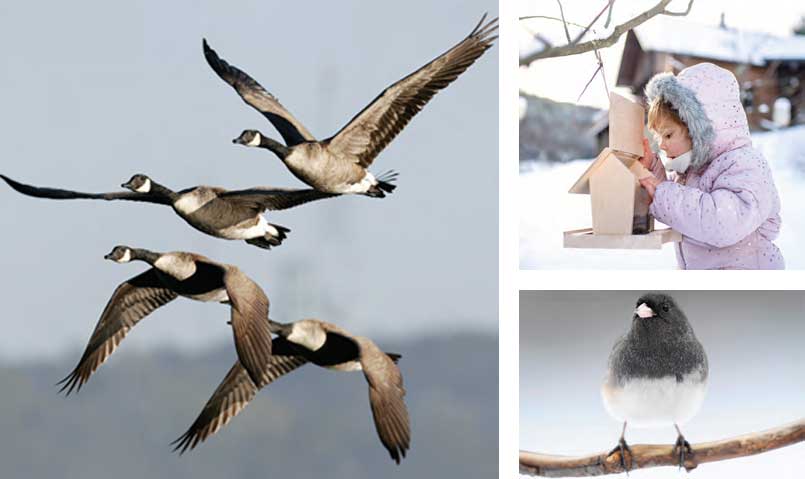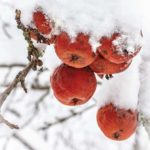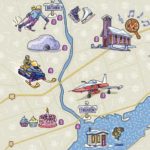
As the first blasts of wintry weather strip the hardwood hills of autumn splendour and the countryside is filled with crisp morning air, one of Nature’s miracles plays out in the skies above us. Thousands upon thousands of migrating birds have made their way southward to their winter homes, crossing over backyards, fields, woodlands, and open water, soaring over cities and towns across southern Ontario.
Migration is seldom spurred by environmental conditions but rather by a bird’s biological clock. This internal clock is governed by the light/dark cycle in a 24-hour period and the yearly rhythms within the bird that dictate moulting, reproduction, and, to a degree, song and migration. The complex process has not been completely unravelled by ornithologists. How does the diminutive hummingbird migrate to Central America and return to your picture window and hover in the precise spot where your feeder hung last summer? It is a mystery best left to the birds!
The birds of Watershed country are divided into categories: summertime visitors, winter visitors, spring and fall transients and resident locals. We said goodbye to the first of our summertime visitors – the orioles, the red-headed woodpeckers, the rose-breasted grosbeaks, indigo buntings and hummingbirds – at the beginning of September. Soon after, we said farewell to the swallows, chipping sparrows, bobolinks, meadowlarks and house wrens. When the summer birds left, we watched the fall transients as they began to filter through the area. The white-crowned and white-throated sparrows scurrying about in the flower beds and underneath your bird feeders were the vanguards signalling that autumn was upon us.
Some of the first fall transients started their journey south in mid- to late August. They are the little fellas that nest in the northern boreal forests and tundra – the dark-eyed juncos, numerous warbler species, the thrush family and the sparrow species. They often travel during the cool of night to prevent overheating their tiny bodies during flight. Their metabolism requires that they eat, drink and rest daily. These species average 400 to 500 heartbeats per minute while maintaining a body temperature of about 40°C. Where suitable weather, food and habitat are found – perhaps your backyard feeder – they often tarry for a few days to rest and replenish. Some species take weeks, even months, to reach their tropical destinations. Their migration is best described as a leisurely meandering southward. You might have seen sparse flocks of hawks streaming south in September and October. Even the occasional solitary hawk will wing its way southward. Their predatory cousins, the owls, migrate at night although not all hawks or owls migrate. Some stay in the breeding grounds, some partially migrate and others leapfrog to southern climes.
Some years we are blessed with an irruption, the unexpected movement of Arctic and boreal forest owls to the south. Two factors usually precipitate an irruption: lack of food and an exceptional reproductive season which sends juvenile birds south in search of prey. Boreal songbirds such as the pine and evening grosbeaks, pine siskins, redpolls and red-breasted nuthatches are also subject to irruptions. Birders relish irruptions, documenting and observing species that may only show up once in a lifetime. Getting close to a great grey owl, snowy owl or a hawk owl is a memorable experience.
September and October brought on the mass migration of local and northern shoreline birds and waterfowl. Ducks and geese, the denizens of endurance, migrate at night and are capable of travelling several hundred kilometres in a single effort. Mallards have been documented migrating 1,300 kilometres in eight hours with an 80-kph tailwind. Canada geese can fly at 110-kph with a tailwind and have flown 2,400 kilometres non-stop in less than 24 hours.
But not every bird migrates. Some species remain; some migrate and some partially migrate.
The blue jay is a perfect example of the above. Through September and into early October loose flocks of five to fifteen blue jays can be seen heading westward along the north shore of Lake Ontario. Most of them are coming from the Laurentians and the St. Lawrence River valley and continue to the north shore of Lake Erie where they usually cross the big water at Long Point or Point Pelee. From there the jay birds take up winter residence in the northern and mid-western United States. Other blue jays stick around all winter.
And the blue jays aren’t the only ones. The colourful assortment of wintertime birds at our feeders includes cardinals, red-bellied, hairy and downy woodpeckers, chickadees, purple and gold finches mixed in with the ground-feeding birds – the juncos, Arctic tree sparrows and mourning doves. Some years our bluebirds stay all winter and enjoy treats of dried cranberries, currants and raisins at the feeder, and occasionally, a robin has stayed the winter.
A bird feeder or bird feeding station offers a glimpse into the fascinating world of birding.
A combination of specialty silo feeders to dispense niger seed, shelled peanuts, milo and millet and of course, black oil sunflower seed is a good starting point. Consider putting a large tray under the silo feeders to catch the seeds that are picked over by the fussy birds. Some species will bill out seeds looking for the ones that are already shelled and easy to gobble down. The bird tray is also appealing to the ground-feeding birds. Hang the peanut silo feeders and the suet baskets directly under the bird tray. The peanut silos and the suet baskets are favourites of the nuthatches and woodpeckers who will appreciate the tray roof over their head to protect them from aerial predators.
Setting up the whole process is a productive venture for the whole family. Once the birds start feeding, it’s difficult to walk by the window without glancing at what’s happening. Problem-solving issues arise: how do you thwart the efforts of the squirrels and nightly visits from raccoons? Make a daily list of all the visiting bird species and their numbers on a calendar journal.
It won’t be long before the honking of migrating Canada geese in April heralds the promise of warm weather and renewal of life. Then it’s time to head to the supermarket to pick the grape jelly and fresh orange dispensers for the orioles and prepare the sugar syrup for the hummingbird feeders. Make sure the tray feeder has plenty of black oil sunflower seed to welcome the first rose-breasted grosbeak.
As we busy ourselves with the simple task of providing food for hungry birds, we have time to reflect and share in a side of nature that is beautiful, gentle and tells us that all is right with the world.
Story by:
Roger Thomas




